The BlackBerry PlayBook Review
by Anand Lal Shimpi on April 13, 2011 9:00 PM EST- Posted in
- Tablets
- Smartphones
- RIM
- BlackBerry
- PlayBook
- Mobile
Pictures
One of the few first party apps that ships on the PlayBook is called Pictures. As you might guess, it's where you can access all photos you've taken with the device as well as copied to it. Photos have to be placed in the /media/photos directory on the PlayBook but once present, they're automatically added to the Pictures library.
Albums are created according to folder name. There are no fancy preview gestures to peek at what's in an album, however once you're viewing an image you can of course zoom in/out using stretch and pinch gestures. There's a simple slideshow mode that flips through photos rather quickly, although there's no way to control the slideshow interval. I normally feel like slideshows proceed too slowly by default but on the PlayBook I'd argue that it flips through pictures too quickly.
When viewing a single picture a top-down bezel swipe brings up the ability to delete the photo, scroll through the list of photos in the current album, or set the photo as wallpaper. You can also launch the camera app from here.
The Pictures app is pretty standard fare although there isn't much in the way of sorting or customization options. It requires that you've got your photos pretty well organized by folder as there's no way to view photos by date and definitely no face detection. Common file formats are supported (JPEG, PNG, GIF) while RAW files aren't (at least from a Nikon D700 and Panasonic GF2).
Music
There's a pretty standard music player app on the PlayBook:
RIM worked with 7digital to provide direct-to-device MP3 sales. Songs are DRM-free and are priced at $1.29 per download:
Video Playback: High Profile Supported
Videos, like photos, must be stored a specific directory (/media/videos) for the Videos app to find them. The PlayBook supports .avi, .mp4 and .m4v file extensions, unfortunately there's no support for .mkv containers. The lack of .mkv support is particularly disappointing on the PlayBook because TI's OMAP 4 is actually capable of playing High Profile 1080p content in addition to videos encoded to base and main profiles.
While you will see lower battery life when playing back High Profile 1080p content, you at least don't sacrifice any performance in doing so. I didn't encounter any dropped frames regardless of encode complexity on the PlayBook. Admittedly I didn't push really high bitrates (my 1080p test was encoded at roughly 10Mbps), but even getting to this point is pretty impressive.
Maps
Microsoft's Bing powers the default search engine and maps app on the PlayBook. While the search engine is configurable, there's no option to prefer Google Maps instead.
Although the PlayBook has GPS and WiFi support, the current build of the PlayBook software doesn't support location services. As a result the maps app is only useful for looking up directions, but not telling you how to get to your destination from your current location.
The Bing Maps app is reasonably quick but not as fast as Maps on the iPad 2 or on the Motorola Xoom.


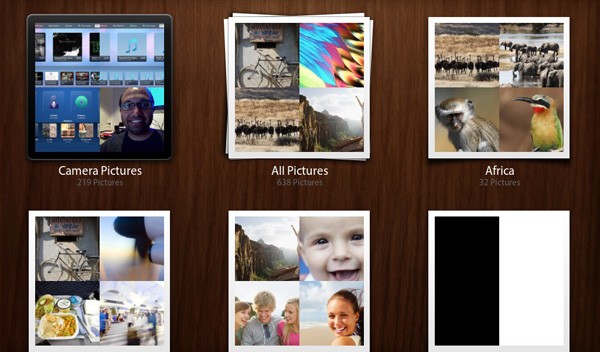
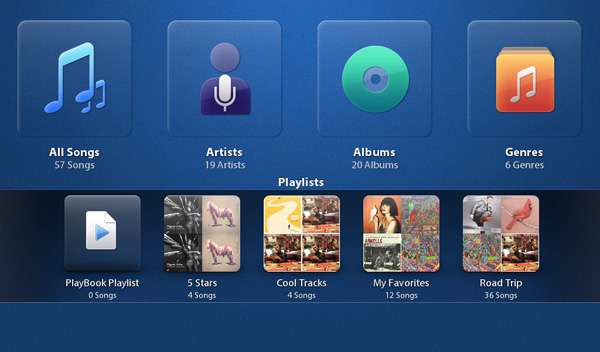
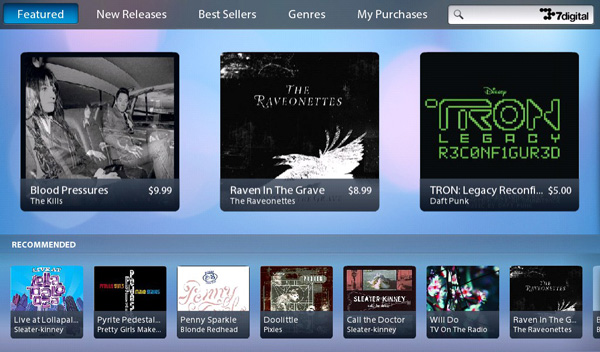
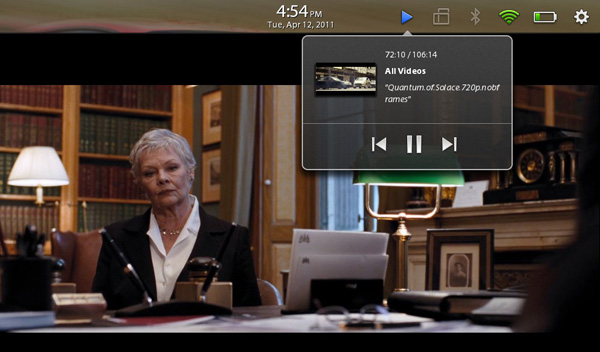
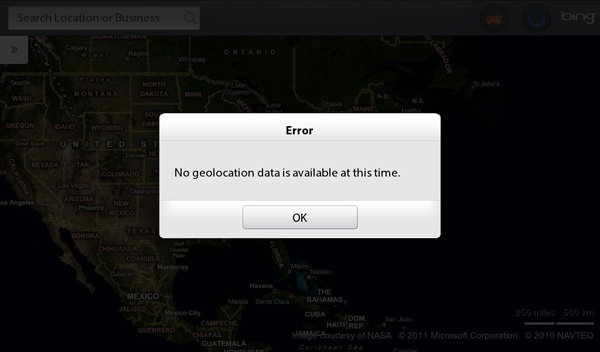








77 Comments
View All Comments
Anand Lal Shimpi - Thursday, April 14, 2011 - link
You're very right, clarified! :)Take care,
Anand
Targon - Thursday, April 14, 2011 - link
I will note that the idea of using gestures that originate in the bezel seems to be an evolution of the Palm(now owned by HP) gesture area on the Palm Pre and the other WebOS based smartphones. Yes, the tablet lets you use any bezel, but as I said, this is an evolution of the concept that Palm implemented with the gesture area.Since the HP Touchpad will not have a dedicated gesture area, it will be interesting to see how things play out going forward in the tablet space.
melgross - Thursday, April 14, 2011 - link
But do the gestures really extend into the bezel area, or do they really just start at the first pixel your finger encounters when swiping from beyond the edge of the screen? I think it's the latter. Swiping from the bezel just insures that your finger will be detected hitting that first pixel in the screen at the edge, which tells the OS that it's a special "bezel" gesture.Maybe I'm wrong, but it makes sense to me that that's how it works, then thinking that the entire bezel is gesture enabled with sensors, though it's possible.
Perhaps Anand, can help here.
AnitaPeterson - Thursday, April 14, 2011 - link
Mate, you wrote so many pages, but eschewed some of the most important questions.1) You discuss the screen, but make no mention of the technology - is it IPS? is it TN? As for the surface - is it polycarbonate? is it GorillaGlass?
2) You discuss the USB, but make no mention of crucial use - does the Playbook have USB host capabilities? In other words, can you connect an external HDD to it (whether self-powered or externally powered) and read files from it?
3) Since we mention USB and external storage, how about a peep about SD card support? Seriously... a review with nary a mention of additional/expandable storage?
4) Why are you comparing it with the iPad and the Xoom, instead of comparing it with the only other real, usable device in its size class, namely the Galaxy Tab??? The Playbook is not for people who want large devices, who can get an iPad... Is it not clear that the size is one of the biggest factors at play here? You mention the Galaxy Tab exactly once, and make an intriguing statement that the Playbook is a bit larger... but when it comes to pictures, again you compare it with the Kindle (!??) and the iPad. Eh? the Kindle???
I'm sorry to be harsh, but this is a rush job... just like the Playbook itself.
Lepton87 - Thursday, April 14, 2011 - link
Have you even read the review? It answers two of your three questions. The tablet doesn't have an SD card slot and it doesn't have an USB port either. Your fist question still stands, I'm also curious what panel technology its screen uses.Pessimism - Thursday, April 14, 2011 - link
Incorrect. It does have a USB port, and the review specifically states this when discussing available charging options. The poster was asking whether its possible to use a male-male USB cable to connect mass storage to it.Pessimism - Thursday, April 14, 2011 - link
of hearing everyone whine and complain about lack of matroska support. matroska has NO STANDING outside anime nuts who can't wrap their brains around a second file to contain subtitles. matroska is a tiny speck with no corporate backing, no manufacturer is going to dedicate development time or die space to support it.Penti - Friday, April 15, 2011 - link
Actually it has pretty good manufacturer standing now, it's supported by Sonic Solutions/divx, ArcSoft, CoreCodec and all the serious chipset manufacturers of media player chipsets and STB solutions. As well as support on BD-players and televisions coming along. Nero also has support for it btw. Even boxes like the Roku now supports local playback and MKV. (Roku XDS with USB) Also there is no die space needed it's just a container. Software is all that's needed. Nokia also added MKV support in Symbian^3.DesktopMan - Thursday, April 14, 2011 - link
"As you'll see in our video tests, the PlayBook is the first ARM based tablet we've used that can decode a 1080p H.264 High Profile video stream."I believe the Hard Kernel ODROID-A was the first on the market (though in limited availability), as it's using the Samsung Exynos 4210 SOC. Would be great to see a test of that, to see how well the Exynos drives a tablet. I have high hopes for it.
NCM - Thursday, April 14, 2011 - link
The ability to handle 1080p H.264 is technically impressive, but I have to wonder about its relevance to the intended business market. One might like that at home, although even there it seems to me to be a party trick.And speaking of business use, the idea of using webmail for that is of course a joke, especially on a mobile device that won't always have a live net connection. I'm sure we all understand that this really is a software timing problem, but still, a bit of an embarrassment for RIM.
I'm not enticed by the 7" screen size, which is too big for the pocket and seems too small for good reading functionality. But one of the things we're seeing from the iPad's success is that people are coming up with their own uses for tablets, uses that weren't necessarily envisioned before they hit the market. Maybe that'll happen with the 7" devices too?